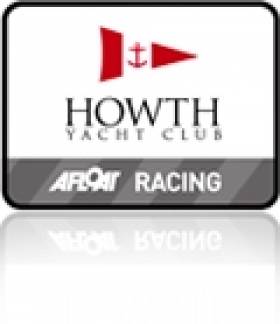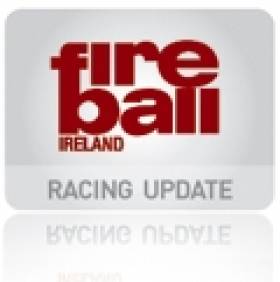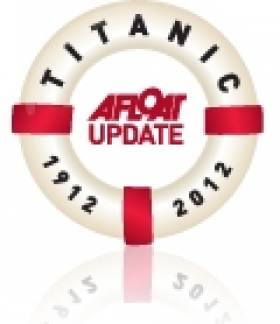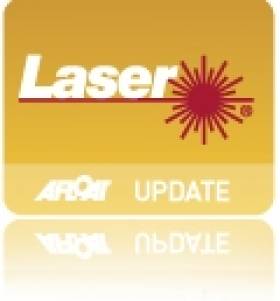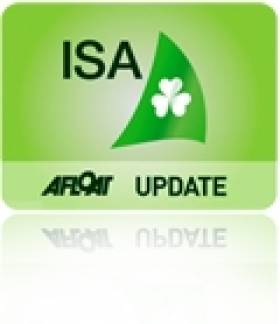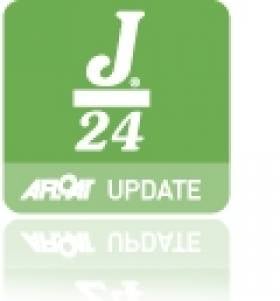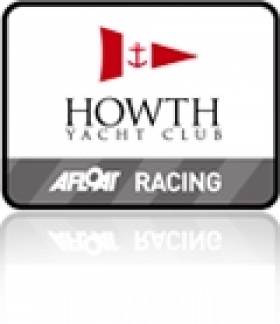Displaying items by tag: Howth YC
Modern Rigging Materials Presentation at Howth Yacht Club
#HOWTH – In preparation for the 2012 sailing season, Marlow Ropes, in conjunction with Masts & Rigging, will deliver a free presentation on modern rigging materials in Howth Yacht Club on Wednesday 28th March, starting at 7.30pm.
In addition to information on Marlow's involvement in various sectors of the rope business and its extensive product range, the presentation will include details on the uses and advantages of high-performance ropes in the sailing environment.
The free-admission evening will include a raffle – at €2 per ticket – to win halyards made from Dyneema high-performance rope.
Howth YC Expands Spring Warmer Series
#SAILING – Howth Yacht Club's highly successful Spring Warmer series in April, again sponsored by Key Capital Private, has an added significance for crews seeking early season practice before the BMW Cruiser Nationals at Howth in late May.
That event should help to boost numbers of Dublin-based boats in Classes 1, 2 and 3 while the one-design classes will see the Etchells, J/24s, SB3s, Puppeteers and Squibs in action.
It should also prove a useful practice for the J/24s whose Eastern Championship will be hosted by Howth the week after the last Spring Warmer races.
Taking place on three Saturdays in April – 14th, 21st and 28th - the 2012 series will have two race areas for the eight classes. The racing format will be again be two windward/leeward races scheduled for each of the three Saturdays.
First guns will sound at 10.55 on April 14th and entries can be made online on www.hyc.ie.
Fireballers Heading for National Honours in Howth
#FIREBALL – Top Irish dinghy sailing class, the Fireballs have announced the 2012 Irish Fireball Nationals will be hosted by Howth Yacht Club over the last Friday and Saturday of June and the first Sunday of July – 29th, 30th June & 1st July.
This 3-day event will see nine (9) races being sailed under the race management of one of Ireland's leading clubs which has a very impressive recent record of hosting international events:- the Etchells Worlds in 2010 and the J24 Europeans in 2011, together with a host of regional and national events encompassing dinghies and keelboats.
In 2012, in addition to the Fireball Nationals at the end of June Howth will also run the BMW sponsored Irish Cruiser Racing Association Nationals over three days at the end of May. These are just two of some seventeen regional or National events that they will host in 2012.
Situated on the northern perimeter of Dublin Bay, but "round the corner" from Dublin Bay, racing for the Nationals will be on a sea-course where there is very little interference from commercial traffic. The club boasts a sizeable marina, a substantial clubhouse that has its own restaurant and bar and a marina/sailing office that has full-time staff. It enjoys easy access from Dublin Airport and the ferry terminals (10 miles) and in 2010 hosted an exceptionally well run Leinster (regional) Championships for the Irish Fireball fleet.
Its race management team boasts one International Race Officer and several National Race Officers, one of whom is expected to do the "Fireball gig".
The timing of the event has been changed twice to accommodate various Fireball fixtures in the Irish/UK/European Fireball scene, namely the Fireball Europeans in Rome in July (21 – 27th), the 50th UK Nationals (11-17th August) and a number of domestic events in Ireland.
In 2011, we canvassed for commitment to this event from the UK Fireball fleet and got some encouraging responses – one of the main attractions being the concept of multiple races on each day – as opposed to the current UK model of a race a day.
The website for online entries has already gone live, so this article is a very early invitation to come and join us for what we expect to be a very well run event.
Enter the event here
Howth Yacht Club to Recreate Titanic Menu
#TITANIC – Howth Yacht Club members will experience and commemorate the 100th Anniversary of the sinking of the Titanic on Saturday 14th April, when the HYC head chef will meticulously re-create the final first Class dinner served on the fateful ship. See the menu below. A Charity raffle on the night will be held in aid of the RNLI.
The First-Class Menu
As served in the first-class dining saloon of the R.M.S. Titanic on April 14, 1912
First Course
Hors D'Oeuvres
Oysters
Second Course
Consommé Olga
Cream of Barley
Third Course
Poached Salmon with Mousseline Sauce, Cucumbers
Fourth Course
Filet Mignons Lili
Saute of Chicken, Lyonnaise
Vegetable Marrow Farci
Fifth Course
Lamb, Mint Sauce
Roast Duckling, Apple Sauce
Sirloin of Beef, Chateau Potatoes
Green Pea
Creamed Carrots
Boiled Rice
Parmentier & Boiled New Potatoes
Sixth Course
Punch Romaine
Seventh Course
Roast Squab & Cress
Eighth Course
Cold Asparagus Vinaigrette
Ninth Course
Pate de Foie Gras
Celery
Tenth Course
Waldorf Pudding
Peaches in Chartreuse Jelly
Chocolate & Vanilla Eclairs
French Ice Cream
The repast was served with a different wine for each course. Following the tenth course fresh fruits and cheeses were available followed by coffee and cigars accompanied by port and, if desired, distilled spirits. If you have to have a last dinner, you could do a lot worse!
Howth Laser Frostbite Inter-Club Laser Masters Challenge
#LASER – All Master Laser sailors are invited to compete in the second running of the Laser Inter-club Masters' Challenge being held by Howth Yacht Club on Saturday 10th March as the finale to the Laser Frostbite Series.
All Masters Laser sailors are invited to enter teams (3 minimum) to compete for the trophy. The event consists of 3 races (two windward-leewards, each approx 40 mins. duration, and the Round the Island Race), with the first race starting at 10:55. The best three Masters sailors from each club will count for the trophy.
The famous Howth Laser Lunch and prize-giving will follow straight after racing. The Ireland V Scotland game will be shown on big screens after the lunch in the club bar.
More details from Howth Yacht Club.
Irish Sailing Association Seeks Revised Fee Structure
#ISA – The Irish Sailing Association (ISA) is convening an extraordinary general meeting to propose a revised membership fee structure next month.
The introduction of the 'joint membership scheme' in 1993 fundamentally changed the representative base of the Association and now the ISA say that because clubs have changed over the past 20 years there is 'a need to introduce a single fee formula that is proportionate to a club's membership subscription income'.
The brainchild of former president Roger Bannon, the original scheme underpinned the financial viability of the ISA by making every member of a sailing club also a member of the ISA.
The current ISA subscription rate is 10% of a member's club subscription subject to a minimum of €24 and maximum of €36. For most of the bigger clubs such as Dun Laoghaire's waterfront clubs, the Royal Cork, Kinsale and Howth the rate is €36.
The ISA takes subscriptions from 73 sailing and powerboat clubs in the country ranging in size from the smallest clubs with only a dozen members to the largest in Dun Laoghaire, the Royal St. George Yacht Club with 1,858 members according to the ISA CEO Harry Hermon.
The total number of club members affiliated to the ISA is estimated at over 21,000.
In 2010 income from club member subscriptions generated €320,843 for the ISA but in 2011 this had dropped to 286,087.
The EGM is scheduled for February 11th at the Royal Marine Hotel in Dun Laoghaire.
Cull heads Howth Laser Frostbite into second series
#LASER – In one of the most competitive Howth Yacht Club Laser Frostbites in many years, Ronan Cull ended the first series as clear winner, discarding a second place in the 11-race programme. Conditions were very consistent throughout the series, with winds mostly in the 10-14kt range, the exception being a late November weekend which gave the fleet fast sailing in winds of over 20kts.
The minor places were all up for grabs on the final day with Evan Dolan (NYC) starting the day in a comfortable second but David Quinn, Colm Cunningham and Ronan Kenneally (RCYC) all within a couple of points of third. In the end, Dolan scored a second and fourth to consolidate his second place overall. Cunningham had an uncharacteristic seventh place in the first race to effectively put him out of contention for third leaving it up to Quinn and Kenneally to fight it out for the last podium spot in the final race.
With two points between them, Kenneally had to put two boats between himself and Quinn, which was the case on the final run after a capsize by Conor Greagsby. However, Greagsby recovered well to pass Kenneally again before the final mark and with only one place separating them, this allowed David Quinn to take third overall, with Kenneally in fourth and Cunningham in fifth.
In the Radial Fleet, it was a Malahide clean-sweep with Alex Shackleton winning, Sean Anglim second and Ciaran Costello third. The final two races were a fitting close finish to a great series with boats travelling from Dun Laoghaire, Skerries, Wexford, Cork and Malahide to compete.
HYC’s Frostbite organisers are expecting Series 2 to be even more competitive than the first, with more races and possibly some windier conditions than in November and December. Ronan Cull will be hot favourite to win both series, a feat that hasn’t been achieved since the 2001/2002 season when Colm Cunningham won both trophies. 18 races are scheduled and entry is now open (www.hyc.ie) for anyone who didn’t race in Series 1.
The HYC Frostbite series will finish with the traditional ‘Round the Island’ race, this year on Saturday 10th March. The final day will again feature the Inter-Club Masters’ Challenge which was such a success last year. This is a team event with the top three over-35 sailors from any club in the country counting towards the overall trophy. Racing will include two normal course races and the Round the Island Race with no discard.
Last year, the event was won by the host club but hot competition is expected in 2012 from the Ballyholme and Dun Laoghaire Masters’ fleets. As always, the infamous ‘Laser Lunch’ takes place after racing on the final day in the club restaurant along with the overall prize-giving.
J24 World Champs for Howth in 2013
#J24–Howth Yacht Club will stage the J24 World Championships from 22nd to 30th August 2013. This follows the successful staging of the class European championships at the club in September. Irish boats will be required to qualify for the event.
Northside Dragon Wins in Howth
Jay Bourke's Etchell, Northside Dragon was the winner of tonight's Howth Yacht Club scratch race for the keelboat class. Second was Fetching, Quinn/O'Flaherty and third Simon Knowles' Jabberwocky. In the SB3s Gareth May's Investwise was first, Shane Murphy's Dinghy Supplies sceond and third was Shockwave (E.Quinlan).
HOWTH YACHT CLUB. TUE + SAT SERIES 1 10/05/2011 17 Footer SCRATCH: 1, Deilginis Deilginis Group; 2, Leila R Cooper; 3, Isobel B & C Turvey TUESDAY SERIES 1 Puppeteer SCRATCH: 1, Gold Dust Walls/Browne; 2, Mojo Stanley/Callen; 3, Enigma D Butler; Puppeteer HPH: 1, Gold Dust Walls/Browne; 2, Flycatcher D Wright; 3, Enigma D Butler; Squib SCRATCH: 1, Shadowfax P Merry; 2, Puffin E Harte; 3, Wasabi C & N Penlerick; Squib HPH: 1, Pegasus Smyth+Friends; 2, Shadowfax P Merry; 3, Puffin E Harte; Etchells SCRATCH: 1, Northside Dragon J Bourke; 2, Fetching Quinn/O"Flaherty; 3, Jabberwocky S Knowles; SB3 SCRATCH: 1, Investwise G May; 2, Dinghy Supplies S Murphy; 3, Shockwave E Quinlan
500 Boats will Kick Start the Dublin Sailing Season this Weekend
There could be anything up to 500-boats afloat for events right across the bay and out in to the Irish Sea.
Joining the 390 boat DBSC fleet for its 128th season is a gathering of over 300 dinghies in Dun Laoghaire for the Mitsubishi Youth National Championships at the Royal St. George and National Yacht Clubs. It's an important event because it is a dry run for next year's ISAF Youth Worlds on Dublin Bay.
The National Yacht Club is also host for the first race of the 2011 ISORA offshore season. Up to 17 starters from a possible ISORA entry list of 40 are confirmed for the first race to Holyhead. First gun for ISORA is at 0755. An Early one!
Across the bay in Howth there is a competitive fleet assembled for the SB3 Eastern Championships. A notable feature of the event is the inclusion of Olympic campaigner Annalise Murphy.
Ashore, Réalt na Mara Dun Laoghaire RNLI's new D-class lifeboat is to be officially named during a ceremony on the East Pier in Dun Laoghaire this Saturday at 12 noon. The lifeboat is to be named by Mr and Mrs Pat and Kathy Kenny. RTE presenter Pat Kenny and his wife Kathy have been long-standing supporters of the Dun Laoghaire RNLI lifeboats.
Mid week forecasts show good sailing winds for the weekend. Met Eireann is forecasting Southeast to east force 2 to 4 breezes, light enough for a gentle start to the season but there's still a chance of stronger for Saturday afternoon. Listen to Eddie English's weather prediction from Cork Harbour.


























